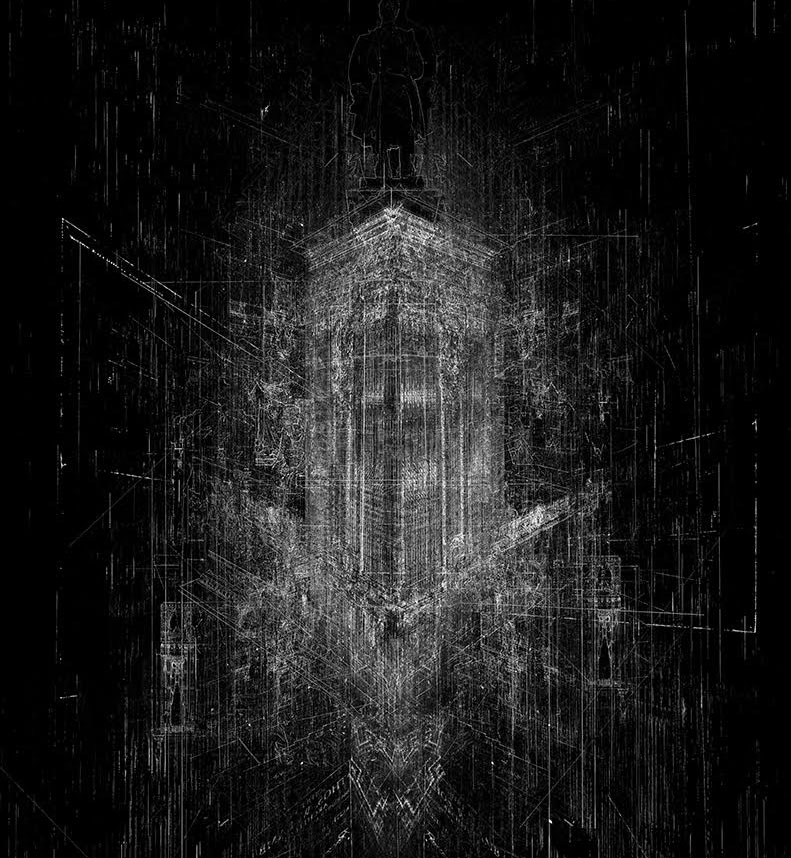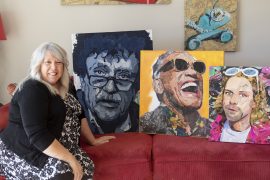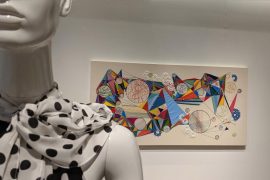Conner Green is an Indianapolis-based artist working as Big Car’s artist and placemaker in residence. Work from his series “Imperia” is currently on view at the New Harmony Contemporary Art Gallery, in New Harmony, Indiana. Green studied art and literature at Indiana University and received his MFA from the University of Wisconsin, Madison.
Paula Katz: You just moved back to Indiana about a year ago, what is it like being back here?
Conner Green: It’s interesting being back at this evolution in my art career. I certainly have a new vantage point of Indy. I don’t think I would have come back to Indy 10 years ago. There seems to be more momentum culturally speaking. I think there is the opportunity for serious artists to grow here and establish roots here than there has been in the past. It’s like what Ralph Waldo Emerson said, “build, therefore, your own world.”
PK: Can you share some more about your position at Big Car?
CG: That’s the main reason I came here. I saw this position opened and the official title is artist and placemaker in residence and it entailed a lot of responsibilities that are very similar to my skillset. I spend a lot of my time building stuff, from refurbishing houses to an art gallery and even a bee sanctuary. I also facilitate various events around town as well as at the Tube Factory. One of the perks is I have access to a shop and live on Big Car’s campus.
PK: Your series Imperia addresses American imperialism and architecture as a form of power. For the newest pieces in this body of work you have reversed the monochromatic color scheme you used in the previous work. Could you talk about that departure? What was the impetus to reopen this investigation?
CG: It took me a while to decide to continue this body of work. I felt like I’ve grown since I completed Imperia, but there were also some loose ends. As it relates to the inverted monochromatic color scheme, I developed some new processes. I learned how to take my own photographs and convert them into white, linear lines, which allowed me to explore space a little more.


PK: Have these works always existed in a monochromatic format?
CG: There are so many layers involved in the digital platform, that the file sizes would be double or triple and they’d be too cumbersome to work with in color. But, that’s not the main reason they are monochromatic, I have always used blueprints and their color scheme is the foundation of the work.
PK: Can you describe a little bit more about the process used to make these works? There is a big digital component to them.
CG: The works are really born out of trying to push photographic conventions. The process itself involved me collecting and archiving blueprints, both physical copies and through digital archives. I also use my own drawings and photographs if I am not getting what I want out of the blueprints. I compile everything into a heavily layered digital collage and the form begins to emerge as I work through developing the layers.
PK: For me as the viewer, some of these seem like recognizable locations, but they are really an amalgamate of that visual vocabulary of what that “type” of building or monument should be; essentially, they become building archetypes.
CG: The conceptual impetus of the work was to create a typological survey of composites of iconic architectural forms. What if we took all the blueprints of a particular form, let’s say of a pedestal and mashed them all together. What would that look like? What would the blueprint, the skeletal structural form of that look like? That was my initial hunch of making that work. Then I got a little bit more playful.

PK: Would you say there were any current events or other ideas that influenced these new works beyond the idea of architectural archetypes?
CG: The first Imperia images emerged out of the late Bush era and my anger against the political environment at that time. I wasn’t previously making political work, but I wanted to do something that was historical and political. There is one piece in the newer series where there is an unrecognizable or unknown figure on a pedestal and I intentionally did that. The public environment is still saturated with all these dead, old, white, colonial war-mongering figures. Indianapolis is second only to Washington DC in terms of war monuments and memorials per capita and that figured in to the piece.
PK: How do you think viewers connect with the body of work Imperia?
CG: One of the things I recognize about that work is it does have a seductive quality to it, an aesthetic hook, but that to me is just a device. For some people, that is what art is, an expression of beauty. Viewers are also drawn to the degree of detail in the work. When you are up close, I hope it becomes a little bit chaotic. That chaoticness, I hope, is a little unsettling, a little dystopian. I hope viewers then begin to think about more than their immediate surroundings, to consider how architectural relates to institutions and power.
PK: What artists inspire you?
CG: Being interested in typological surveys, I am very much inspired by Bern and Hilla Becher and their beautiful photographic studies of industrial forms. I love Julie Mehretu, because she’s essentially using the same visual style, but with a more painterly language and more abstract expression. Sarah Sze is doing that sculpturally, actually dealing with space. I also love architects. I am currently super excited about Lebbeus Woods.
Check out Conner’s website here!




